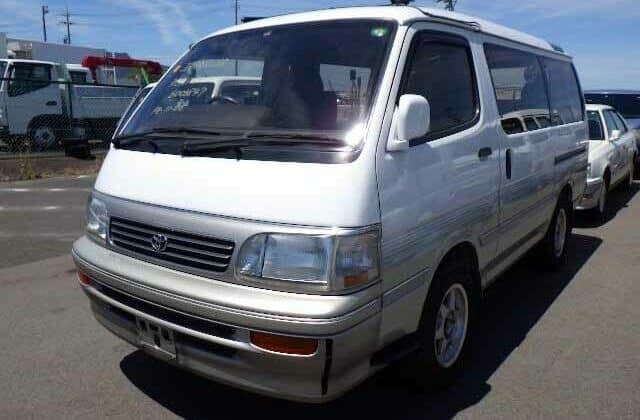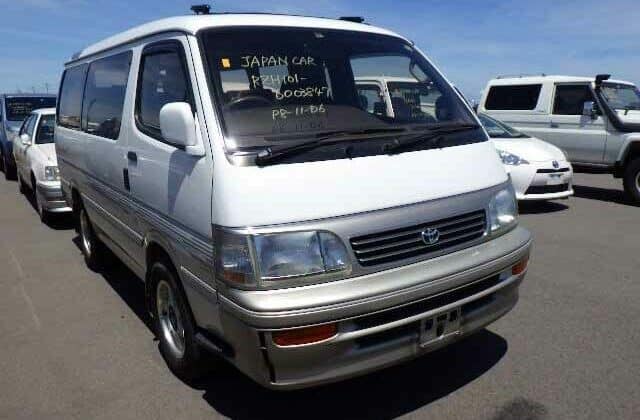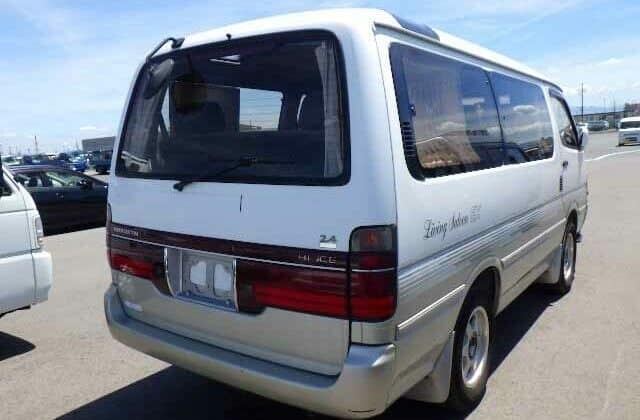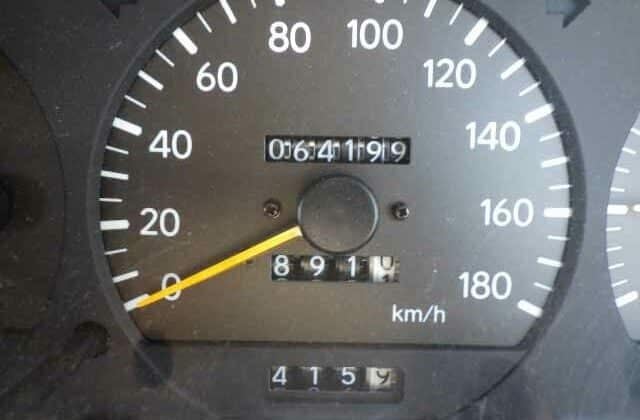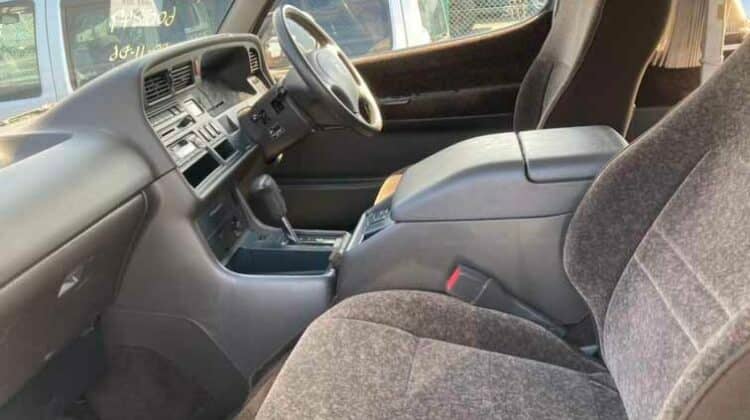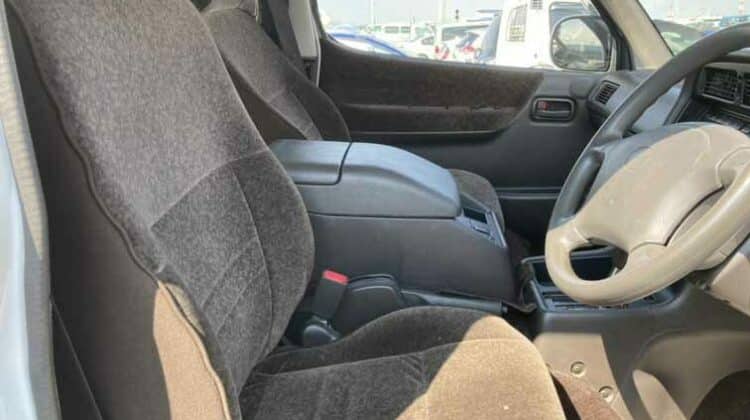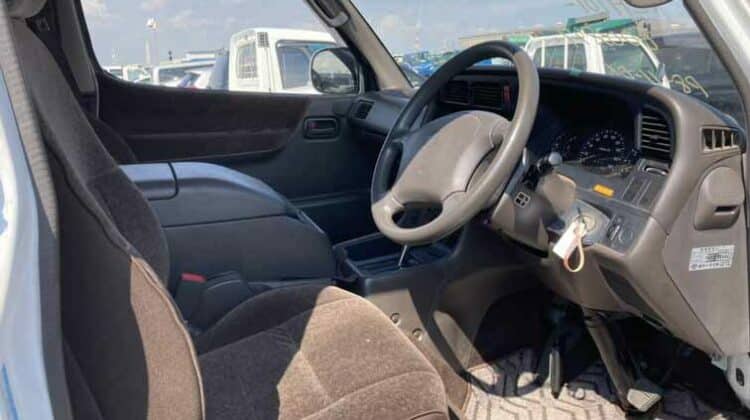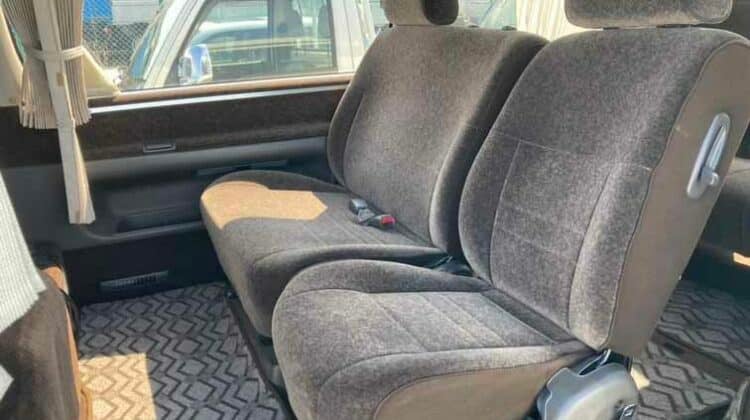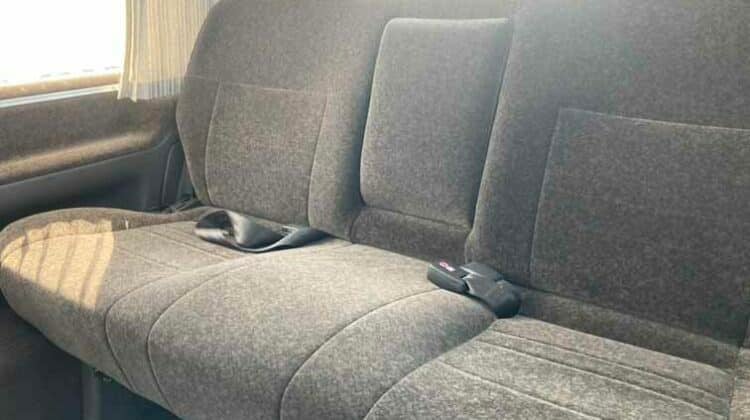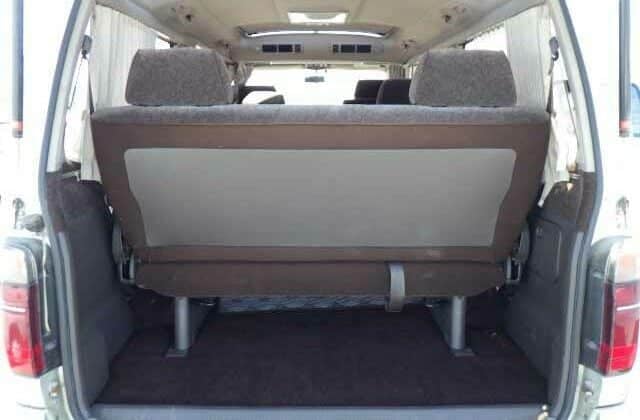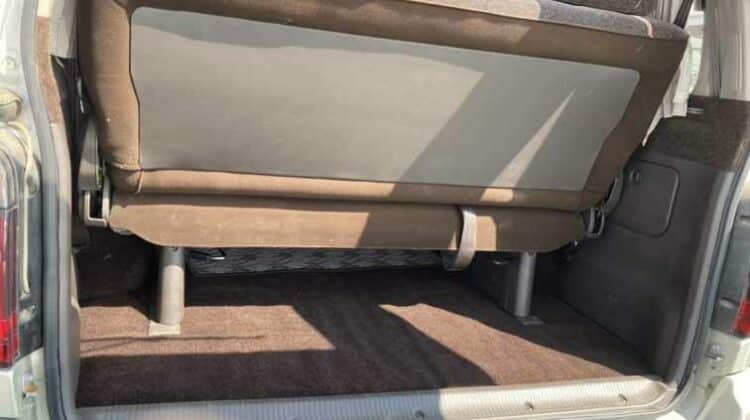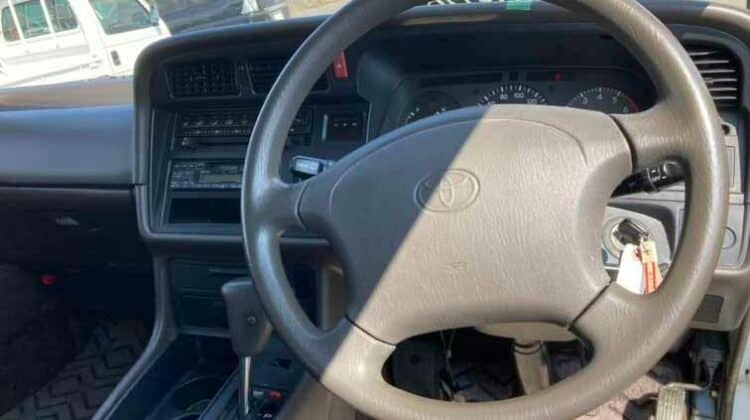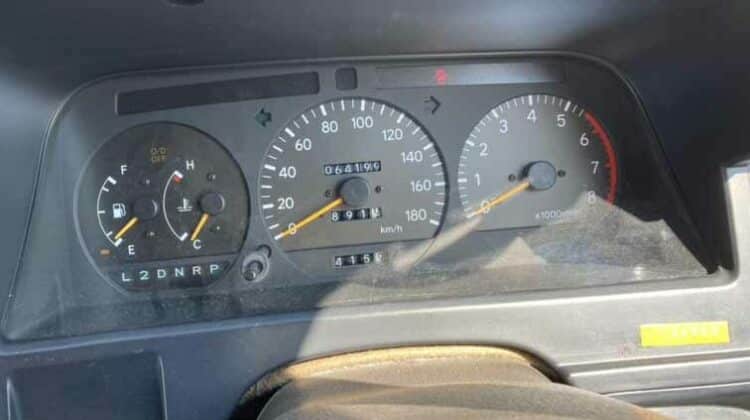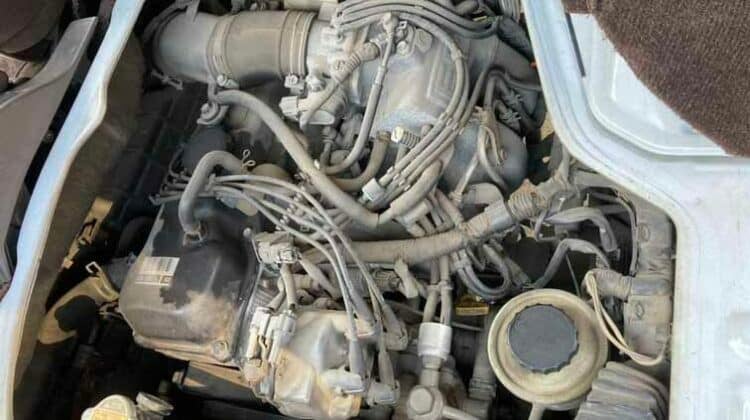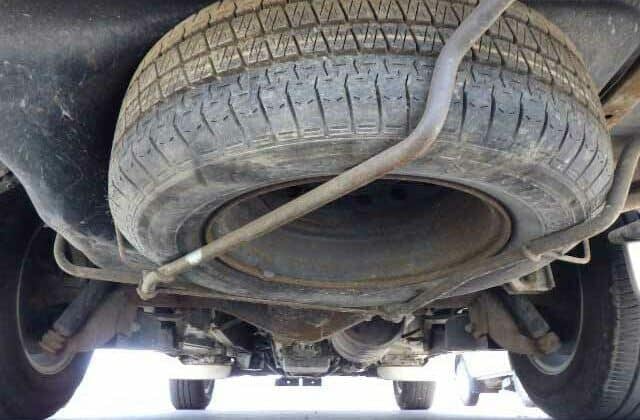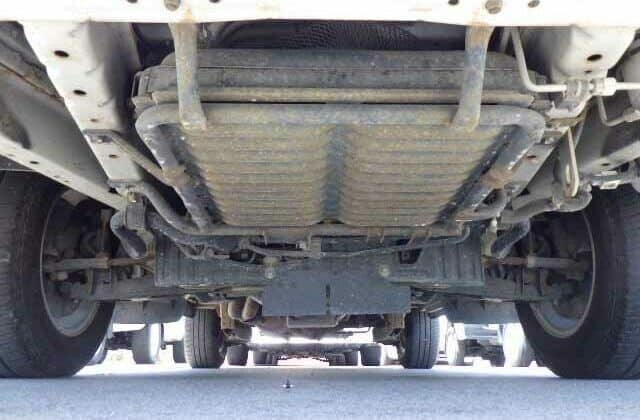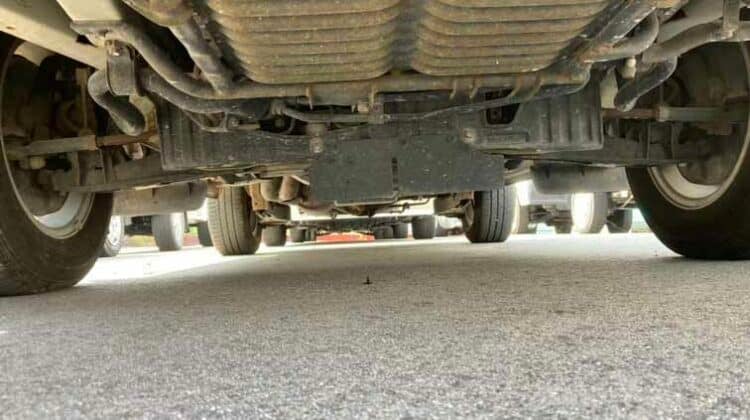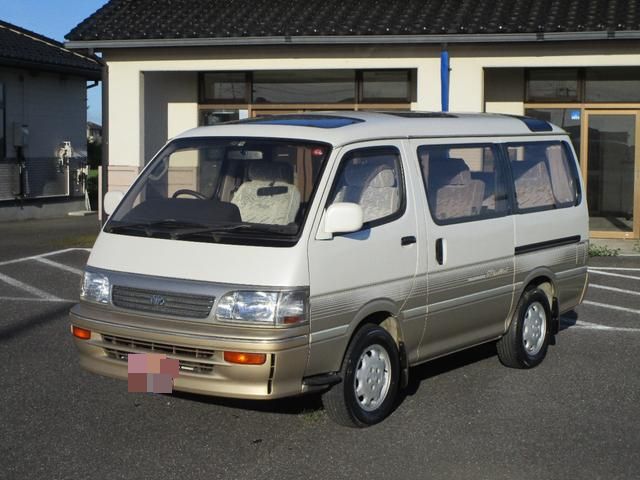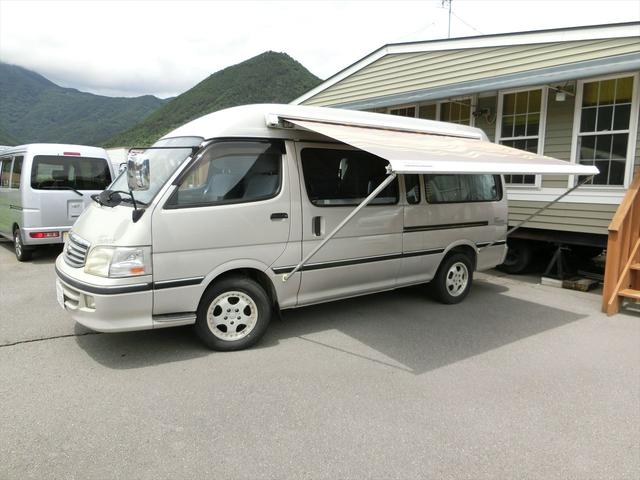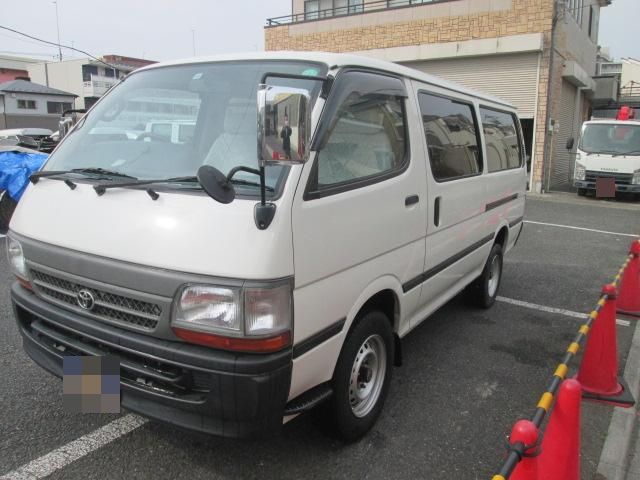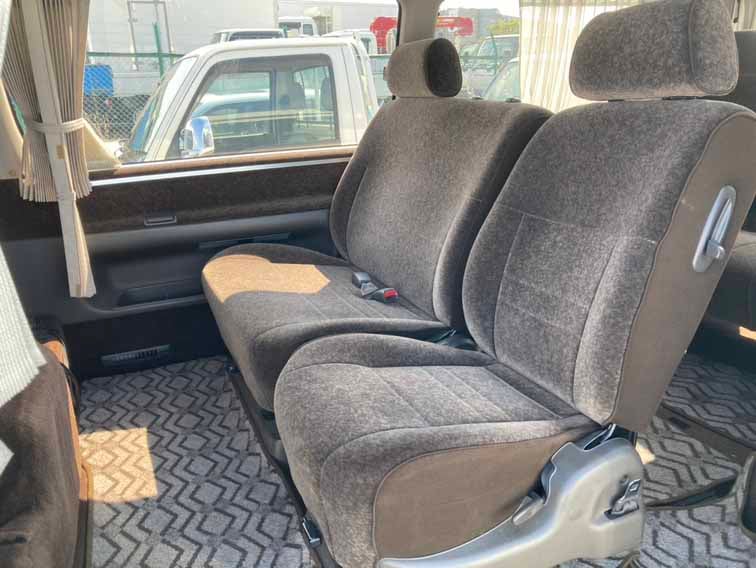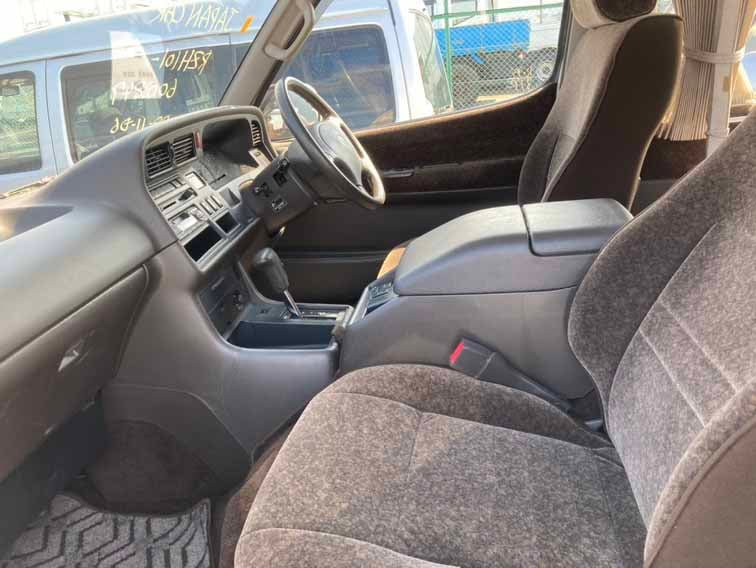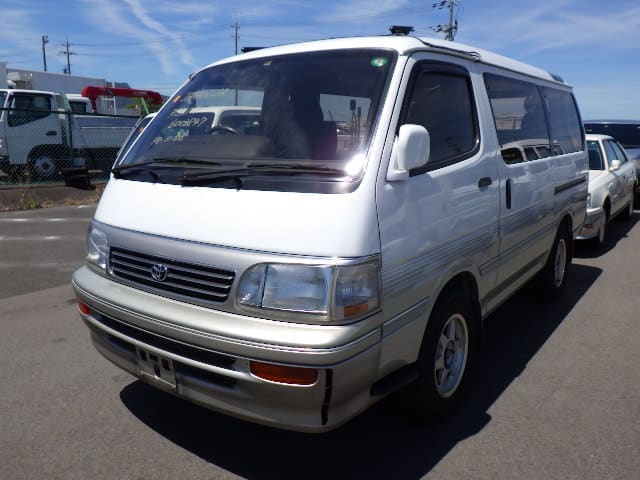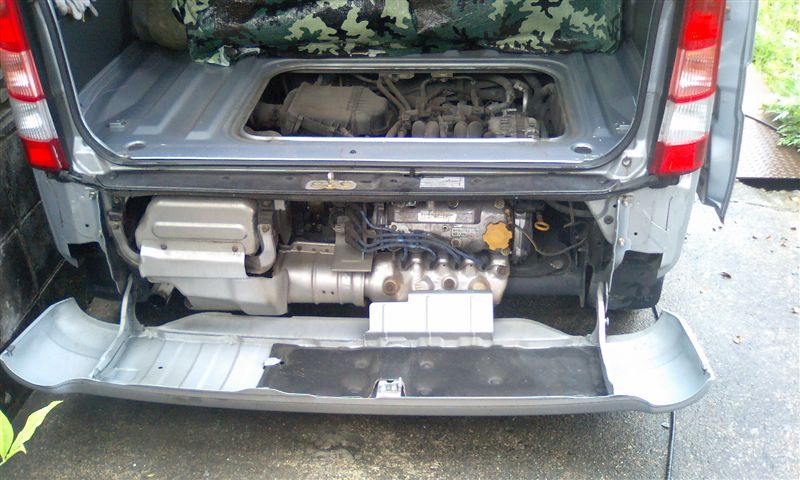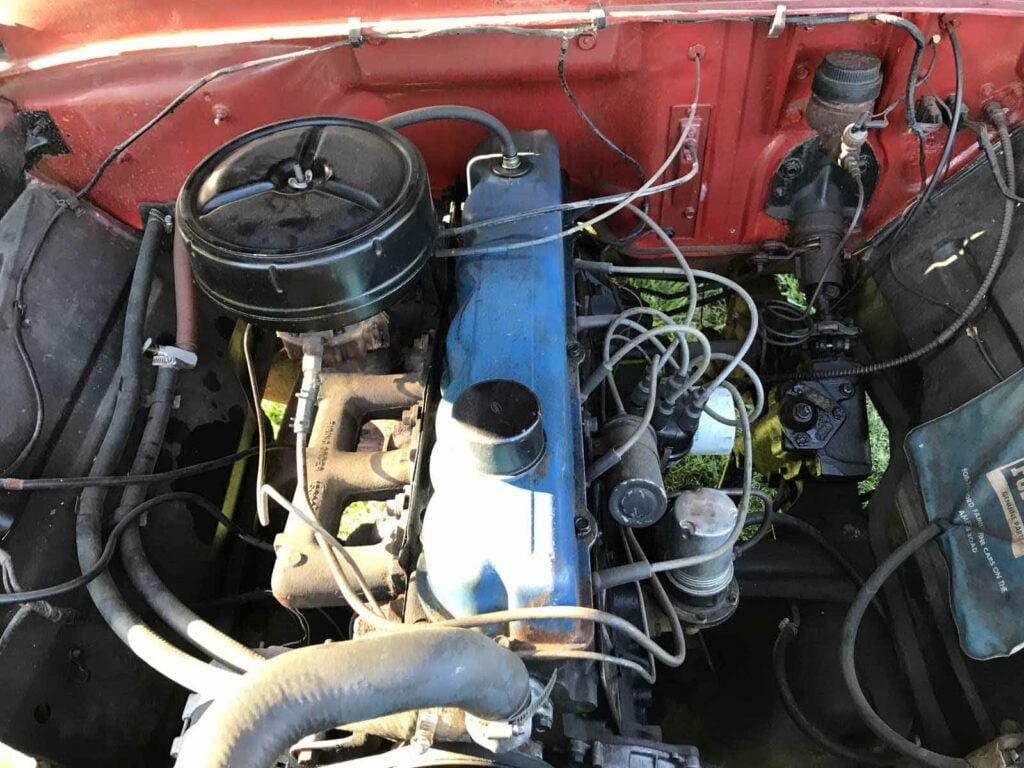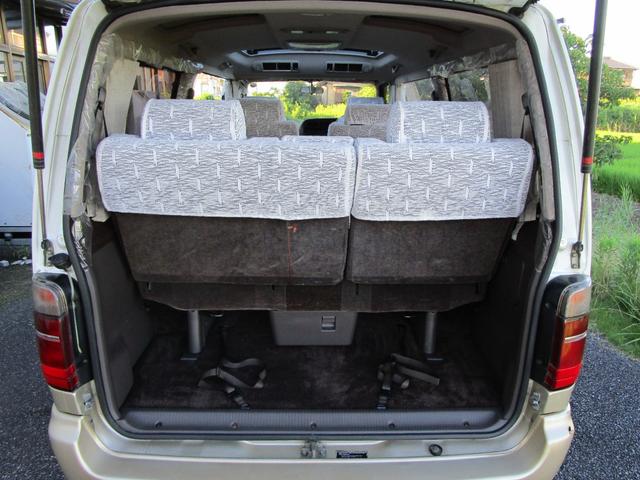1995 Toyota Hiace Van Super Custom (RZH101 chassis type)
Sold and Exported
The Hiace is the Most Popular Used Japanese Full Size Van for Export. But You’re Shy of Diesel? Don’t Worry. You Can Have a Gas Engine Hiace.
At Japan Car Direct we ship many good, clean, low mileage Toyota Hiace vans to our customers overseas, especially to the USA; like this 1995 Hiace Super Custom which we recently sent to America via the port of Jacksonville. Hiace vans are among the most popular used full size vans (“manly vans”) that you can buy and ship direct from Japan yourself. And when you are looking for a 25-year-old used Japanese van to import to the USA (or Australia) where the used car import rules for 25-plus year old cars are much simpler, it’s the overall quality of the Hiace that scores big time. And I mean quality in a number of senses:
Toyota Hiace Quality: Mechanical
First off, what I’m talking about when I’m talking “quality” is the fact that these vans last for a long time. They just go for years and years and miles and miles. I still see many older Hiace vans on the roads here in Japan; vans from the ’90s and even from the ’80s. There are passenger versions,
camper versions,
and even tradesman’s versions.
All trucking along seemingly endlessly.
And they are reliable: With a 25 year old Toyota Hiace you are getting typical Japanese 1990s automotive build and design quality. Personally, I think that ’90s Japanese domestic market (JDM) cars have the best overall quality of any era in motoring. I’ve written before (here) about why, for me, ’90s JDM is the cat’s meow.
Toyota Hiace Quality: Components
Another thing I notice when I meet up with a 1990s Hiace (we’re talking the H100 series chassis family here, which ran from 1989 to, about, 2004, depending on the market and sub-type…and it’s a BIG family of sub-types) is that the basic component quality strikes me as very high, indeed. Especially, I note that the interiors and exteriors wear well. Paint keeps its color, plastics are solid, seat cloth and carpeting wear very slowly and often look near new, even on older vehicles. A perfect example is this Hiace that we are looking at right now. Check out the interior in these photos here:
and here:
and the paint work here:
Looking pretty good, eh? And this car is twenty seven years old! Good road!
Toyota Hiace Quality: Repairability
Generally, I find working on vans a pain in the neck. (With the exception of my beloved Subaru Dias kei van, which had very good access to the rear mounted engine.)
With most full size Japanese vans, like the Toyota Hiace or the Nissan Vanette, the engine is up front, but between the front seats, and access can be tight. But the H100 chassis vans give decent (for this vehicle layout, mind you) working room around the engine. Have a look at the engine bay of our guy here:
Yeah, I can reach most things: hoses, wires, cables. Pretty good for this vehicle layout. But, as you guys all know, working on the engine of a van that has the “front-mid-mounted” layout, to use the technical term, is never as easy as working on something like the engine of an old pickup truck.
There’s enough room around the engine in there to change the fan belts, the plug wires, and the air cleaner, and still have enough space to set up a lemonade stand.
Some Specs for This Hiace
Now let’s look at some of the specs on our Super Custom here.
The fellow weighs 1,840kgs (4,050lbs) empty and has a max load of 440kgs (970lbs), to give us a gross weight of 2,280kgs (about 5,000lbs). Unloaded weight distribution is good with 1,000kgs (2,200lbs) over our front axle and the remaining 840kgs (1,850lbs) over our rear axle. And he’s not a particularly wide vehicle at all: only 1,690mm (67 inches), so he’s actually pretty compact left to right, and at 4,640mm (183 inches) front to rear, he’s no road hog. Yet, internal capacity is generous: we’ve got eight seats in a Hiace Super Custom and nobody is really cramped.
Brakes are tried and true: Ventilated disks at the front and drums at the rear.
The engine is a simple straight-four gas burner running a 9:1 compression ratio. That ratio means that we get to use regular gas (yeah!) and that the engine, overall, is not a highly stressed unit. He’ll just go and go. 120 brake horse at 4,800rpm and 146 foot pounds of torque at a nice, low 2,600rpm means that this engine is a grunter. The four speed auto trans puts our power to the rear wheels, giving us a simple, modular drive train layout.
Gas Engine Benefits
Now, most 1990s Hiace vans here in Japan are Diesel powered units, and those straight four Toyota Diesels, like the 2.8 liter 3L,
are good units indeed, but some guys, myself included, are a bit “shy” of running Diesel in our private vehicle. I drove lots of Diesel trucks back when I worked in transport and construction, but the company picked up the tab for maintenance. Sure, Diesel wins (generally) on fuel economy and (generally) on engine lifespan. But when it comes to maintenance, Diesels are (generally) more expensive to fix and (generally) require special tools. I don’t have the special knowledge and special tools for Diesel diagnosis and repair, so owning a Diesel makes me nervous….generally.
If you are like me in this area and you want to import a used Toyota Hiace van direct from Japan, don’t let the predominance of Diesel units hold you back: Gasoline Hiace vans are available and they are a good alternative to the oil burners.
Especially in these times of difficulty and crisis, which we’ve been talking about recently on our Japan Car Direct Blog (here, here, and here), a vehicle that we can, at least to some degree, troubleshoot and repair ourselves, may be the best overall choice. I expect the present shortage of Diesel fuel (time of writing: November, 2022) to be temporary, but it does wake us up a bit to the commercial pressures on Diesel stocks which are, at least to some degree, less serious when it comes to gasoline/petrol stocks.
Most of the used full size vans that we export from Japan go to the USA, the UK, Canada, Australia, or New Zealand (you’ll find the used car import rules for these countries on our Japan Car Direct website just by clicking on the country name above),
and this 1995 Hiace Super Custom van is a perfect example of why buying and importing a used full size van direct from Japan is such a good deal. He’s clean, well cared for, and with very low miles on him and while I am not permitted to reveal what our customer in the States paid for him (commercially sensitive, guys, commercially sensitive), I can tell you that, were I living in the USA (or Canada or the UK, Oz or New Zealand, for that matter) and looking for a good clean used Hiace van, the money our customer paid.….I’d happily pay that, no problem.
So if you in the market for a full sized used van from Japan, just register here with us at Japan Car Direct and we’ll help you get a good one that you can keep for many years and many miles. (And, by the way, Hiace vans have very good resale values in the USA right now, but that’s a whole other topic, a topic that we are very happy to discuss with dealers and potential dealers. Yeah, contact us.)


